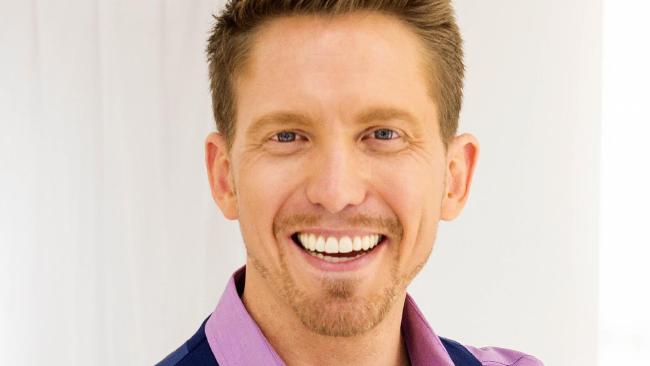I’m immediately concerned. She’s obviously unwell and looking for answers, but I’ve seen patients with similar results and I’m worried she’s being scammed.
Lyme disease is real, but there’s no scientific proof that it’s occurring in Australia. My patient has never travelled to an area known to have Lyme disease, so I know she’s been given the wrong information somewhere along the line.
Borrelia is the cause of Lyme disease and this bacteria is transmitted to humans via tick bites in North America and Europe.
My patient explained that after months of fatigue, muscle pain and headaches she wasn’t getting anywhere with her usual doctor. In desperation, she consulted Dr Google and quickly diagnosed herself with Lyme.
She read internet forums and learned about a “Great Australian Lyme Conspiracy”, where regular doctors don’t believe that Lyme even exists, but she felt hopeful when she discovered the name of a charismatic Lyme practitioner.
She travelled a long way to attend his Lyme clinic and he backed up her diagnosis. He explained that local pathology labs never gave correct results, but a special lab in America would confirm their fears.
She sent her blood overseas and paid more than a thousand dollars to receive a positive diagnosis of Lyme disease from an unaccredited lab.

Pathology labs in Australia are asked to comply with strict guidelines. They’re closely monitored and accredited by the National Association of Testing Authorities (NATA), an organisation that ensures patients receive accurate results. Patients who’ve been bitten by ticks in Australia have their blood tested at accredited labs all the time, but so far we haven’t seen a test come back positive for Borrelia infection.
Lyme activists will tell you that NATA-accredited labs don’t detect Borrelia because their machines aren’t sensitive enough to pick it up. The truth is that unaccredited labs aren’t specific enough, and tend to deliver positive results for Borrelia whether you’ve got Lyme disease or not.
My patient was told that Borrelia was all through her body, eating her joints and rotting her brain, and her Lyme practitioner recommended a long course of high-dose antibiotics.
Panicked by this horrific news and desperate to get her old Lyme-free life back, she obediently commenced treatment. Six months on and feeling much worse than when she’d started, she attended my clinic looking for more help.
When this all began, she was definitely sick. Australians are getting a mysterious illness from tick bites all the time. We don’t know what it is, but we know it’s not Lyme.
Lyme activists are not known to be scientific, but are known to be politically powerful. In 2013 they pressured the Australian government to investigate Lyme disease and in response, the Chief Medical Officer formed the Clinical Advisory Committee on Lyme disease (CACLD).
In 2014 the CACLD concluded that there was “no routine finding of Borrelia in ticks in Australia” and recommended that further research was necessary to find a cause of this mysterious illness affecting Australians. An updated statement was released in February 2016 by the Department of Health, reiterating that “so far there is no conclusive evidence of a causative agent in Australia”.
It’s already bad enough that Australian patients are provided with unvalidated results, but even if they were infected with Borrelia, the therapy offered by Lyme practitioners doesn’t follow therapeutic guidelines.
Using up to four weeks of antibiotics is the treatment recommended to eradicate Borrelia. This makes most people feel better, but some patients continue to feel unwell after Borrelia is long gone. This is known as post-treatment Lyme disease syndrome and is caused by the bacteria triggering the immune system to cause chronic inflammation.
Local patients don’t get better from their first month of antibiotics (because they don’t have Lyme disease) so some practitioners try harder and increase the dose or extend the treatment for 12 months or more, and it still doesn’t work.
My patient fell into this camp. She felt worse than when she’d started treatment and I diagnosed her with severe jaundice due to drug-induced hepatitis. In other words, she was bright yellow because the high-dose antibiotics were causing liver failure.
I sent her straight to hospital in an attempt to save her liver and her life.
She was definitely unwell to begin with, but science is yet to confirm the cause of her mysterious tick-borne disease. Treating her blindly for Lyme was not the right way to go.
Political pressure from Lyme activists has resulted in a Senate Inquiry which is now underway. I’m hopeful that the Senate will uncover the actual ‘Great Australian Lyme Conspiracy’, where vulnerable patients are being scammed with expensive unaccredited tests, where unscientific and untruthful diagnoses are handed out, and where inappropriate and bogus treatments are endangering the lives of already unwell people.
Please note that this information is not an opinion, but has been written in consultation with some of Australia’s leading infectious disease physicians and pathologists.
Let’s end the conspiracy and work together to find the true cause of this mysterious illness with science-based medicine. It’s only then that we might be able to find a cure.
